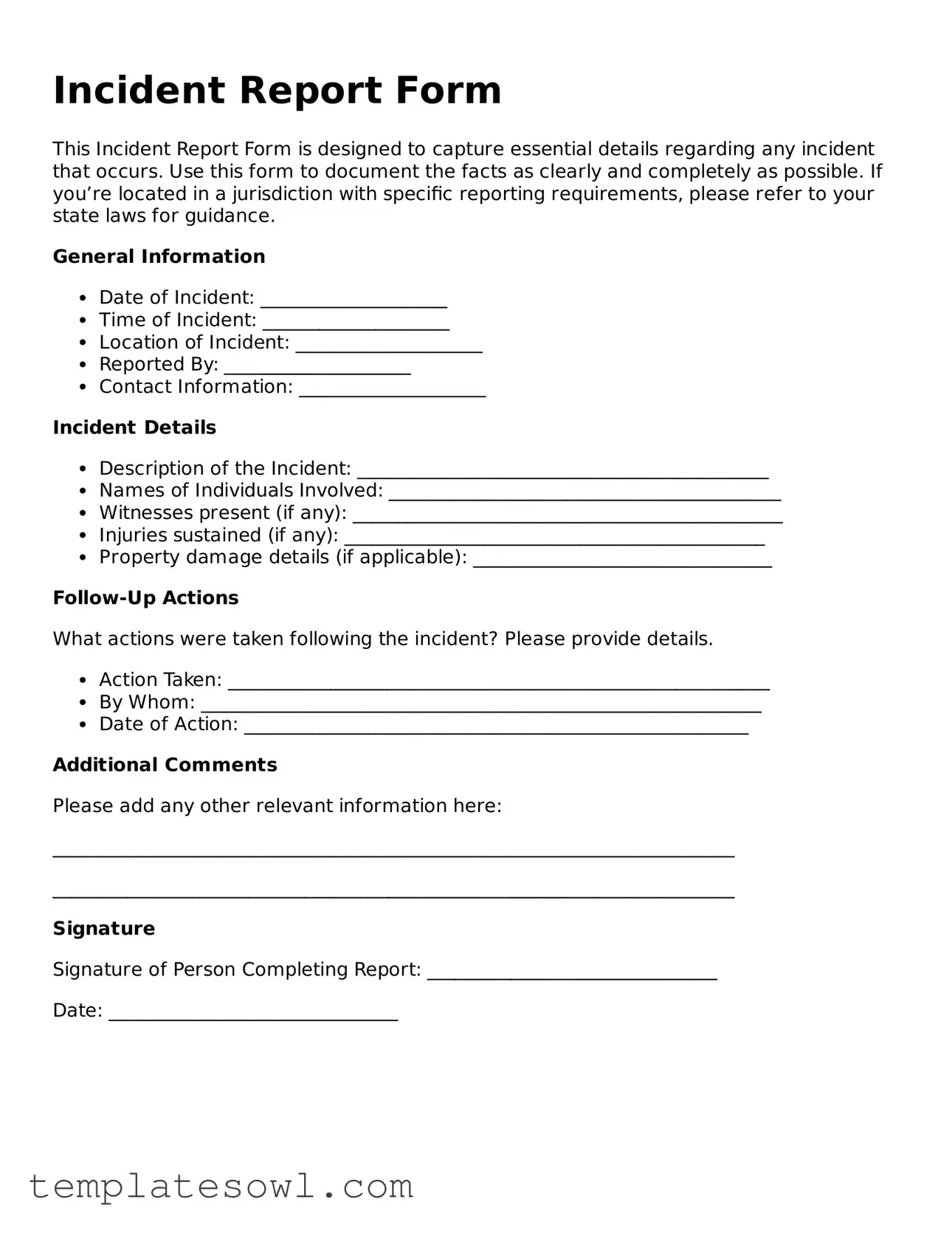What is an Incident Report Form?
An Incident Report Form is a document used to record details of an event that involves an accident, injury, or a safety incident within an organization. It captures crucial information such as the date, time, and location of the incident, as well as the names of those involved and any witnesses. This form helps organizations keep track of incidents for safety analysis and legal compliance.
Who should fill out the Incident Report Form?
Typically, the individual who witnessed or was involved in the incident should complete the form. This might include employees, supervisors, or any other relevant parties. In cases of significant incidents, a supervisor or manager may take responsibility for ensuring that the form is filled out accurately and submitted to the appropriate department.
Why is it important to submit an Incident Report Form?
Submitting an Incident Report Form is essential for several reasons. First, it ensures that there is a formal record of the incident, which can be critical for any future investigations or legal matters. Second, it assists in identifying patterns or recurring issues within the workplace, helping to improve safety measures. Lastly, it fulfills the legal obligation to report workplace incidents, protecting both the employees and the organization.
What happens after the Incident Report Form is submitted?
Once the form is submitted, it will typically be reviewed by a supervisor or a designated safety officer. They will assess the details, investigate the incident further if necessary, and determine appropriate follow-up actions. This may include implementing safety changes, conducting training, or in some cases, involving human resources or legal departments. Depending on the severity of the incident, management may also decide to take additional measures to prevent future occurrences.
